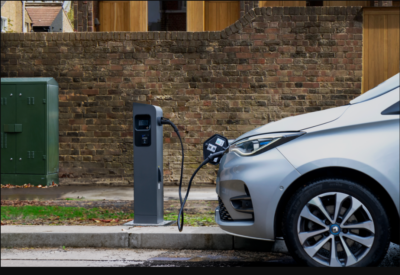BVG lays foundation stone for e-bus depot in Marienfelde
According to BVG, the new site will be equipped with modern charging infrastructure, two workshop halls, and an administration building. Around 180 employees will eventually work there in order to ensure stable and emission-free bus operations. Together with a second new building on Köpenicker Landstraße in Schöneweide, the BVG is creating space for around 440 additional vehicles—almost a third of the planned e-bus fleet.
The laying of the foundation stone on Säntisstraße follows a tendering process beginning in 2023. In February 2024, the contract was awarded to a consortium called ARGE BVG Säntis, consisting of ZECH Bau SE and SBRS GmbH, with the duo taking on both planning and execution services. SBRS is a subsidiary of Shell Deutschland GmbH, and specializes in charging infrastructure solutions for e-buses, e-trucks, and e-ships, in mid-2022. The Berlin consortium therefore involves not only a construction company and a charging infrastructure manufacturer, but also, indirectly, an energy company with experience in operating charging stations.
A total of 209 charging points with a capacity of up to 150 kW will be installed at the depot – all for charging the e-buses overnight. As can be seen in a rendering and an animated video on LinkedIn, these will be mounted on racks in an open area so that the charging cables can be easily connected to the buses parked there. In addition, there will be nine “ultra-fast charging stations” with up to 450 kW for recharging a vehicle’s battery within a short period of time. Furthermore, ARGE BVG Säntis will construct a transfer station, twelve inverter stations, and nine charging masts. There will also be the option of charging double-decker buses.
At the approx. 44,000 square meter site in Schöneweide, the BVG plans to build a workshop and service hall, a modern administration building, and parking and charging facilities for around 200 electric buses. Together with the future depot on Säntisstraße and the existing sites, the BVG will then have eight bus depots.
Fleet planning is also progressing: by the end of the year, Berliners expect that around 280 of the BVG’s approximately 1,500 buses will be purely electric. As an intermediate stage, the operator aims to have at least 500 e-buses in service by 2027, which will be recharged in the depots, but also partly during regular service at a total of 36 terminal stops.
However, the BVG has now softened its goal of complete electrification by 2030: since the beginning of the year, those responsible have been talking about the 2030s, and HVO is also to be used as a fuel during the transition period. BVG CEO Henrik Falk specifically assumes that battery-electric buses will account for a majority of 80 or 90 percent of Berlin’s mobility system by 2035, with HVO100 fuel from waste and residual materials as an option for the remaining ten to 20 percent. This marks a departure from the BVG’s previous, more ambitious goals. A similar softening of e-bus targets – at least in terms of timing – also took place in Hamburg last year.





0 Comments